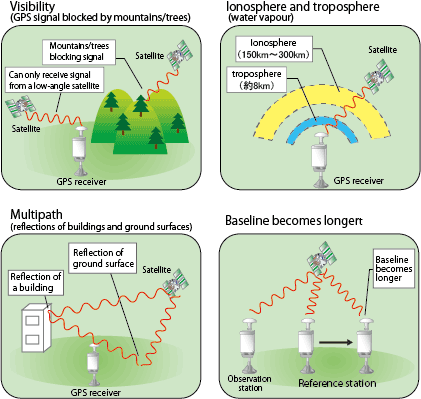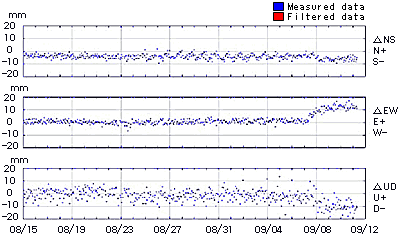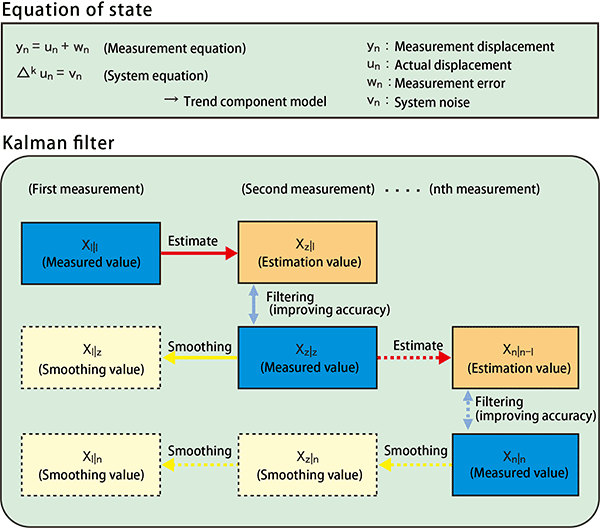G-Trend
- GPS signal status
- Influence of ionosphere/troposphere
- Multipath
- Baseline length


G-Trend separates the actual displacement ‘trend component’ and measurement error ‘noise component’ from the measured data.
The analysis involves smoothing processing※ using the Kalman filter algorithm. This enables the extraction of reliable slope displacement data.

The figure below shows the analysis results of the GPS measured data (blue dots) and trend line (red line) in time series. The analysis will run automatically whenever the data is added and draws a graph of the actual displacement sequentially. The slope displacement of approximately 1~2 mm can be detected using the trend model.

Hiroaki MATSUDA, Hiroshi ADACHI, Yoshie NISHIMURA, and Norikazu SHIMIZU (2002): Applicability of the Trend Model for Smoothing Measured Displacements By Using Global Positioning System and Methods for Predicting Displacement Behavior, No.715/?-60, pp.333-343, Japan Society of Civil Engineers
- Evaluation of slope stability using displacement measurement
- G-TrendTM
- Slope measurement dedicated GPS system
